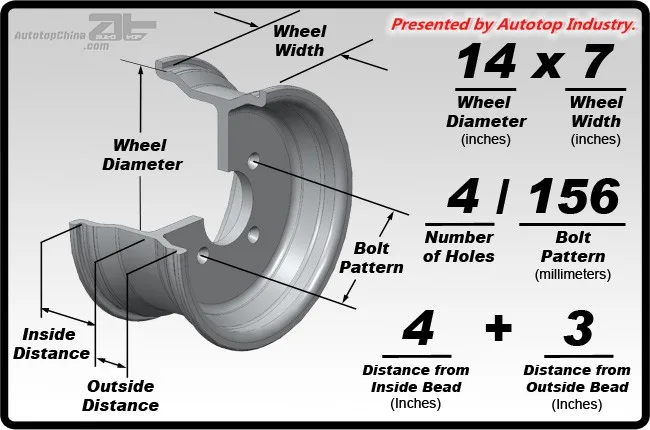Your quad is a do-anything machine. ATV’s are great for getting things done and for recreation too. But now you’re looking at your tires. Maybe you’ve blown one or they’re getting bald. Or maybe you just want a more aggressive tread pattern and a bigger tire. The problem is you’re a little lost when it comes to your ATV tire size.
How big can you go? Should you go big? How do you even know what all these numbers represent?
Don’t worry, we’ve got you covered. We’ll answer all those answers and more in this comprehensive guide.
How Do You Read ATV Tire Sizes?So, you’re shopping around for tires and you see one listed with a size like 26×10-12. Or, worse yet, you find something listed like 206/80R12.
What the heck does all that mean?
First, you need to figure out if you’re dealing with standard or metric ATV tire sizes.
ATV Tire Sizes: Standard Tire Sizing ChartStandard format is much more common on ATV tires than metric. You might see a tire size written 26×10-12 or, occasionally, 26x10x12. This format is pretty straightforward. It uses three numbers to sum up the size:
If you see a tire size that looks like this: 205/80R12, you know you’re dealing with metric. The metric format is exceedingly rare for ATVs and odds are you’ll never come across it. But if you do, the letter thrown in the middle of those numbers is a dead giveaway. In metric, you always have three numbers and a letter:
There may be other numbers and letters before and after these, but they’re not important for understanding your ATV tire size.
Breaking Down ATV Tire Sizes by the NumbersKnowing how to read those tire sizes is just the first step.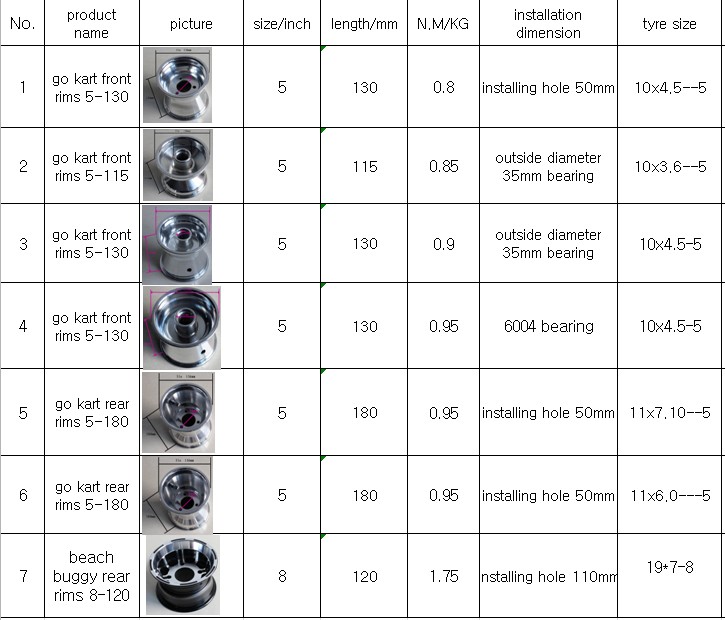 You really need to know how to use them. Is 26 inches a reasonable diameter for your quad? What kind of width do you need?
You really need to know how to use them. Is 26 inches a reasonable diameter for your quad? What kind of width do you need?
When you’re considering replacing all of your tires, you’ll want to make sure you get something that will actually fit on your stock vehicle.
Your typical ATV tire diameter fits within a range of about 20 inches for the smallest machines to about 30 inches for your more factory mud-equipped machines.
Basically, your quad will typically fit into one of few categories:
Keep in mind that you’ll want to keep within a couple inches of your stock tire size. If you go too big, you’ll start to rub on your fenders (among other issues). If you go small—well, that’s just silly.
Tire width is easier to understand. Choosing the right tire width has a lot to do with your own preferences and riding style.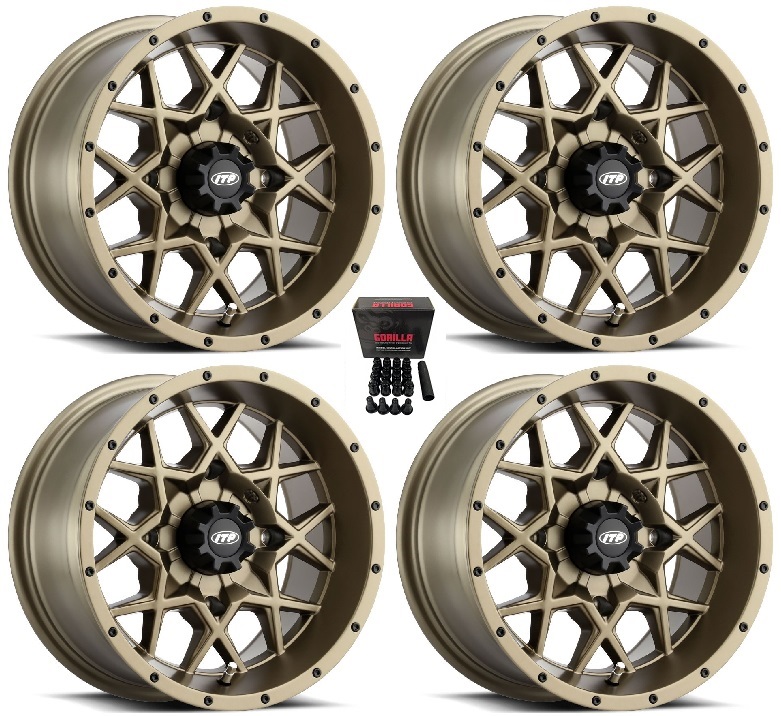
A wider tire tends to give you a flatter tread pattern and more grip. A narrow tire gives you a little more control.
ATV’s usually have a wider tire on the rear than on the front to get the best of both tires. A typical rear tire on a quad will be 10 to 11 inches wide while a front tire will be 7 to 8 inches wide.
But matching your tire width to your riding style isn’t the only thing you need to consider. You also need to make sure it’ll physically fit on your chosen wheel. There are two main ways to make sure it’ll fit.
This one is non-negotiable. You have to make sure your tire’s wheel diameter matches your actual wheel diameter.
You have to make sure your tire’s wheel diameter matches your actual wheel diameter.
Most off-road wheels tend to be 10 to 12 inches in diameter—which is convenient considering most off-road tires are designed to fit those wheels. That’s a good size as it gives your tire plenty of cushion between the tread and rim, which results in smoother rides and more protection for your rims.
Of course, you can end up with bigger wheels if you have bigger tires, but we’re getting ahead of ourselves.
Choosing the Right Size Tires for Your ATVYou don’t need any old tire. You have to choose the perfect ATV tire size for you. After all, you ride your own way and have your own needs.
We’re going to simplify ride style to three main types:
For a workhorse ATV, it’s not a bad idea to stick with stock. It’ll give you the expected traction and power you need.
Trail riding, like dune riding, means you want to go fast.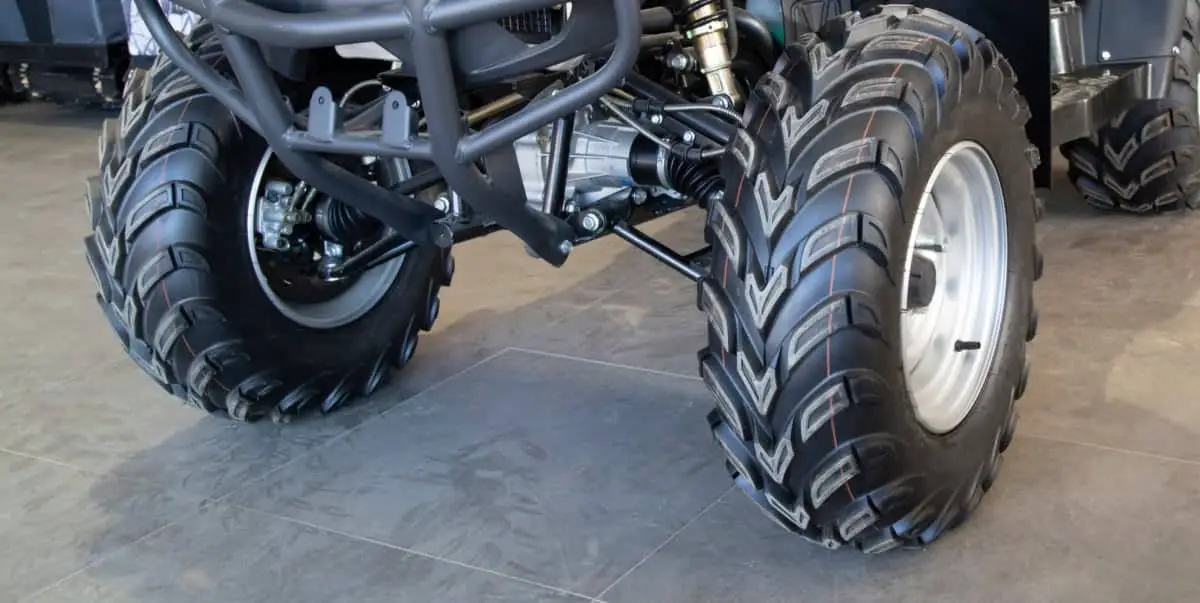 For that, a wider, flatter tire will keep you gripping and in control. If you ride in the mud, you might want to go with something bigger and narrower along with an aggressive tread pattern.
For that, a wider, flatter tire will keep you gripping and in control. If you ride in the mud, you might want to go with something bigger and narrower along with an aggressive tread pattern.Trails and dunes demand high traction, and you get that by going wider. You don’t necessarily need a taller tire, but a wider one will give you the grip you need.
Dominating rock gardens and taking on bounty holes is done best with a big tire. But going big isn’t as simple as just buying the biggest tire you see.
Can I Put Bigger Tires on My ATV?The short answer is yes.
Here comes the long answer.
Every ATV has a theoretical maximum tire size it can fit without modifying the suspension. It’s typically about one to two inches bigger than your stock tires. So if your ATV came with a 27-inch tire, you could probably fit a 29-inch tire without too much trouble.
But what if you want to go bigger?
That takes some work. You’ll either need to invest in a lift kit or some offset A-arms. These types of kits will often tell you what the max tire size is when you have them installed.
These types of kits will often tell you what the max tire size is when you have them installed.
You can’t go big without some consequences though. Namely, you’ll lose torque due to the increased diameter (big tires like a high-gear kit!) and the extra weight. The weight can also put extra strain on your clutch and shorten the life of your clutch belt.
Luckily, you can get your torque back with a transmission gear reduction or GDP Portal Gear Lift (which has a gear reduction built in).
You can also bolster your clutch with heavy-duty drive belts and eek out even more torque with a clutch kit.
So now that you’re equipped with knowledge, go equip yourself with some tires. Get the ATV tire size you want, and ride with confidence.
RELATED CONTENT: ATVs38 tires15
Share
10
Looking up a good set of wheels for recently purchased brand new ATV or used vehicle may seem like an impossible task, especially when wheels are one of the most important parts on your ATV. You need to be confident that you have the right wheels in the correct size, perfectly fitted to your vehicle to be fully immersed in the ATV world. Read this article to learn about ATV wheel sizing, wheel offset, and bolt pattern. So what do all those numbers mean?
You need to be confident that you have the right wheels in the correct size, perfectly fitted to your vehicle to be fully immersed in the ATV world. Read this article to learn about ATV wheel sizing, wheel offset, and bolt pattern. So what do all those numbers mean?
While ATV wheels may be constructed of several materials (steel, aluminum), they all are commonly described by three sets of numbers. Let's take this one wheel example - 12x7, 4+3, 4/156.
The first set of numbers in our example, "12x7" is wheel diameter and width of the wheel. Wheel diameter (12 inches) is the widest point across the center from bead seat to bead seat. The width of the wheel (7 inches) is the distance from the outside of the wheel to the inside or vice versa.
First of all, the offset is the distance from the centerline of the wheel to the hub mounting surface. The example wheel has a 4+3 offset. The first number "4" (it means 4 inches) is the distance from the centerline to the inside bead seat.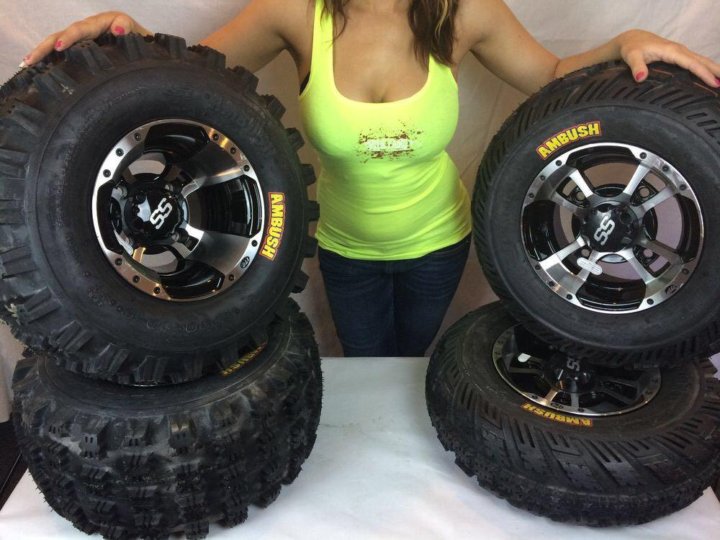 The "3" (3 inches) is the distance from the centerline of the wheel to the outside bead seat (the side with the valve stem hole). The sum of these two distances is 7 inches - the width of our example wheel.
The "3" (3 inches) is the distance from the centerline of the wheel to the outside bead seat (the side with the valve stem hole). The sum of these two distances is 7 inches - the width of our example wheel.
There are three different types of offsets: zero offset, negative and positive. A positive offset is when the inside section (bell) is wider than the outside section (nose) of the wheel. The example wheel has a positive 4+3 offset. If the nose section of the wheel is the widest (3+4 as en example), a wheel has a negative offset. A zero offset is when the hub mounting surface is in the true center of the wheel (4+4 would be a zero offset ATV wheel).
Your ATV already has hubs with one style of the bolt pattern. It may be a 3-lug, 4-lug, or a 5-lug pattern. Besides, each bolt pattern comes in different sizes. So, it is very important to know the correct measurements of the bolt pattern which your ATV has before buying a set of new wheels. Let's take a look at our example size.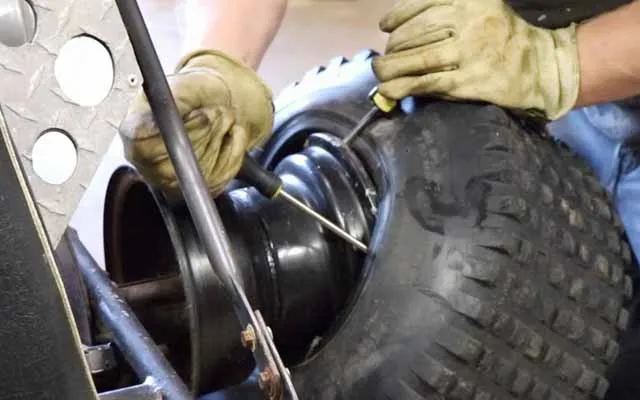 The last section contains "4/156". It also can be written as "4 on 156mm". The number "4" stands for the number of bolt holes. In this case, we have a 4-lug bolt pattern. The "156" is a distance in millimeters from the center of one bolt hole across the center of the wheel to opposite bolt. The spacing of bolt holes also can be described as the diameter of a virtual circle passing through the center of all bolt holes.
The last section contains "4/156". It also can be written as "4 on 156mm". The number "4" stands for the number of bolt holes. In this case, we have a 4-lug bolt pattern. The "156" is a distance in millimeters from the center of one bolt hole across the center of the wheel to opposite bolt. The spacing of bolt holes also can be described as the diameter of a virtual circle passing through the center of all bolt holes.
Visual illustration for understanding ATV wheel sizes.
Summary
12x7 - The wheel diameter x the width of the wheel
4+3 - The offset of the wheel
4/156 - The bolt pattern of the wheel
Share with friends!
Main Page→→
When choosing wheels for an ATV, you, unlike motorcycle wheels, will not depend on the size prescribed by the manufacturer of the ATV. The size and material of the disk here can be changed depending on the needs. Before talking about which ATV rims are best suited to your riding style, it is worth recalling the marking of ATV and UTV rims.
ATV disc marking
Let's demonstrate how to read the disc markings using a specific example: for example, the disc for an ATV has the designations 8x8, 3+5, 4/110. So its diameter, which is indicated in the first digit, is 8 inches. The second number is the inner diameter of the tire, it must match the diameter of the rim.
The next two digits are the offset of the disk, which shows the distance from the mating side of the disk and its conditional middle. At the same time, the marking of the disk on the ATV shows the displacement of the inner and outer sides, the difference between which determines the negative, positive or zero offset of the disk. In our case, the disk overhang is negative and is -2 (3-5=-2). The next figure shows the number of holes in the disc, in our example there are 4. The last designation is the distance between the holes, measured in mm., In our case it is 110 mm.
Choose wheels for ATV
Alloy wheels for ATV have a number of advantages over stamped ones.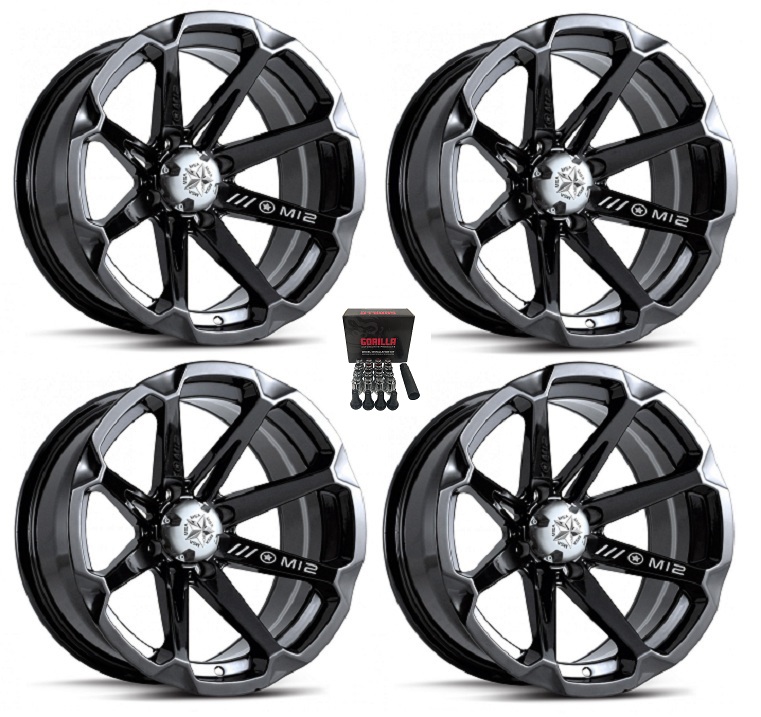 Let's talk about them so that you can understand whether you need to focus on these pluses or leave stamping on an ATV more appropriate.
Let's talk about them so that you can understand whether you need to focus on these pluses or leave stamping on an ATV more appropriate.
First, the alloy wheels on the ATV can be chosen wider than the standard ones. This, in turn, allows you to install non-standard tires on an ATV that will not get up "donut". On alloy rims, a wide ATV tire will increase the contact patch, which means flotation will increase. However, not only alloy wheels on an ATV solve the problem of increasing the wheel track - spacers for disks are also used for this.
The second advantage for which alloy wheels are chosen for ATVs is the reduction in the weight of the unsprung part of the ATV. ATV races are held in a variety of terrain, including relatively flat ground where speed is important and casting will have a distinct advantage here. In other cases, their disadvantage is emphasized - fragility. However, some manufacturers of ATV wheels, such as ITP, give a lifetime warranty on casting, the very fact of which speaks of great confidence in their products and makes them reconsider their attitude towards alloy wheels.
The third reason, which, oddly enough, also matters is the aesthetic side. Despite the fact that the ATV pursues purely utilitarian or sporting goals, many people like to combine functionality and attractive appearance, which can be achieved by choosing an ATV casting.
In addition, many ATV alloy wheels come with beadlocks, and the latter are simply indispensable when driving on flat tires. As you know, with a decrease in pressure, which is done to overcome off-road, the tires have a tendency to disassemble. The easiest and most reliable way to keep the tire on the rim is to use beadlocks that attach the tire to the rim. Badlocks are a steel ring with holes, in place and in number they are divided into two types: one-sided and two-sided. Moreover, it is usually enough to install a one-sided beadlock on a cast wheel for an ATV, since the load on the inside of the wheel is not large. Only hard off road on fully flat tires requires the installation of reversible beadlocks.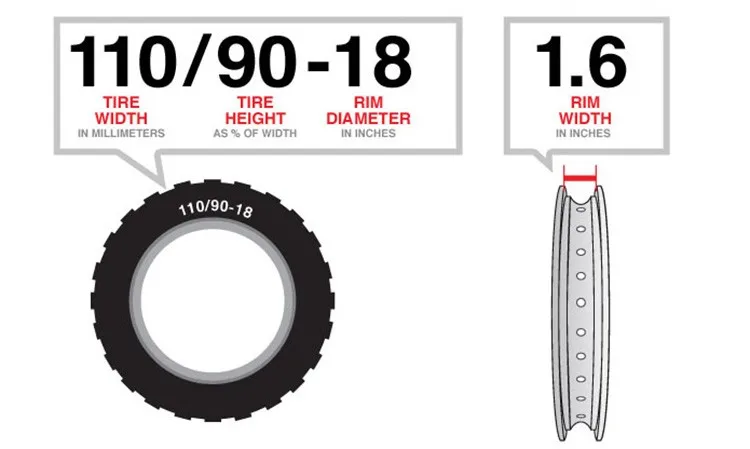
Of course, the use of beadlocks imposes certain restrictions: the speed, as a rule, should not exceed 60 km/h, it becomes much more difficult to balance the wheels with beadlocks, in addition, it is necessary to constantly monitor their condition - clean, tighten. Be that as it may, beadlocks have been produced since the 1980s and Off Road on an ATV is rarely done without. The cast rim and beadlock are welded on, the outer edge of the tire is not put on the rim, but is pressed with a beadlock ring, fixed with a large number of bolts. The inner edge of the tire, if the beadlock is one-sided, is kept as usual on the hump (annular protrusions at the edge of the disc).
ATV rim manufacturers
ATVs are nowhere near the popularity of cars and there aren't as many rim manufacturers here. They are mainly represented by companies that produce off-road wheels for off-road. One of the leaders in the manufacture of alloy wheels for ATVs is the Canadian company ITP, which is famous for its excellent design and excellent durability of its products.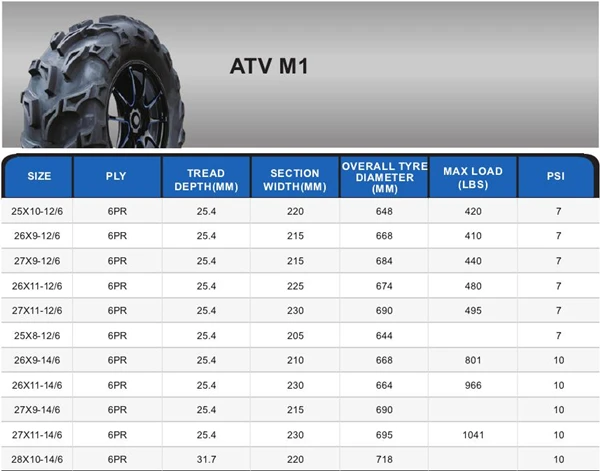 The manufacturer is also interesting for its development of System Six, which allows you to select and replace the finish for the disk. ITP aluminum rims have a replaceable center insert, so if the old one is tired or out of order, you can choose another one in a different color scheme.
The manufacturer is also interesting for its development of System Six, which allows you to select and replace the finish for the disk. ITP aluminum rims have a replaceable center insert, so if the old one is tired or out of order, you can choose another one in a different color scheme.
Also popular are Black Rock ATV rims, which come with a negative offset to increase road tread. Black Rock discs have a wide variety of colors, among the company's products there are alloy wheels for ATVs with beadlocks.
Well, of course, wheels for an ATV can be presented by a native manufacturer who manufactures it himself, or trusts a major player in the market. In addition, in extreme cases, car wheels of suitable size can also be installed on an ATV, if, of course, spacers are used.
05/17/2018
The numbers written on the side of the rubber tire can tell the owner of the ATV everything that interests him. And if you are for some If you don't know what these mysterious numbers mean, then you can be mistaken when choosing the next set of tires. But tires directly determine whether it will go technique further or not. So, in this article you will close all the questions on about the decoding of size ATV tire .
But tires directly determine whether it will go technique further or not. So, in this article you will close all the questions on about the decoding of size ATV tire .
All tires have their own basic parameters - this is the width, height and diameter. The value of these parameters is mainly measured in inches. Exists two units:
1) If you have ATV, then this is for you. English version is the most common number system that is used when determination of tire dimensions on ATVs. All measurements here are in inches. (1 inch equals 2.54 cm). For example, the size indicated in English classification looks like this - 25x8x12 . Let's take a closer look at the meaning of each digit:
- The first digit 25 shows the height of the tire in inches;
- The second digit 8 indicates the width of the tire in inches;
- The last, third digit 12 indicates the diameter of the wheel disk, it is also measured in inches.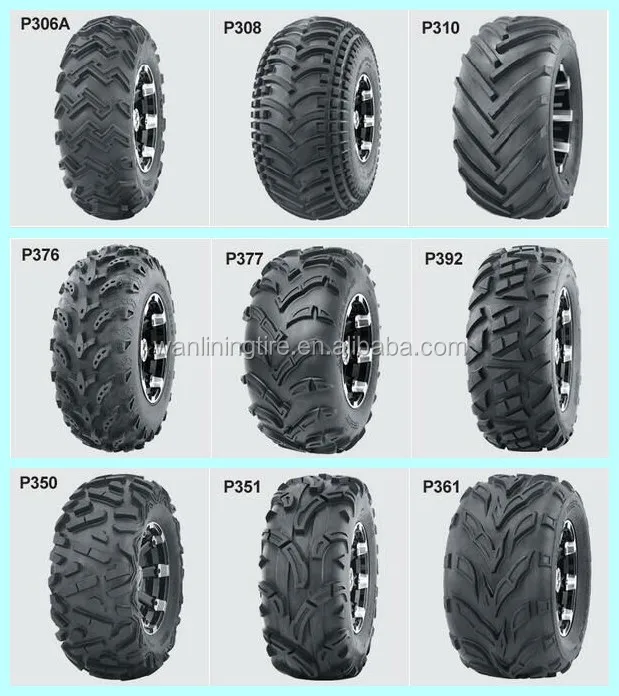 Disc diameter on each ATV can be different. Therefore, be careful before you buy tires for ATV, see what regular disks are installed on your vehicle.
Disc diameter on each ATV can be different. Therefore, be careful before you buy tires for ATV, see what regular disks are installed on your vehicle.
And a very important point worth noting. Often our customers ask themselves: “If I have a tire size of 20x10x10, can I put instead of them 20x11x10? The answer is yes. First, you can put rubber on regular wheels with a size exceeding 1 inch in height and width. Secondly, if you want tires even wider, then for this you will need to buy other disks. But again, there are limitations. On discs of other diameters, you can install rubber, the largest is only 2 inches in height and width.
These two rules must be strictly observed, otherwise, if you try to put tires of an unacceptably large size, this may adversely affect on a quad bike. After all, the rubber will be larger and, accordingly, heavier, which does not fit the technical parameters of the ATV. In production ATVs take into account all the characteristics, so manufacturers of ATV equipment I don't recommend using bigger tires at all.